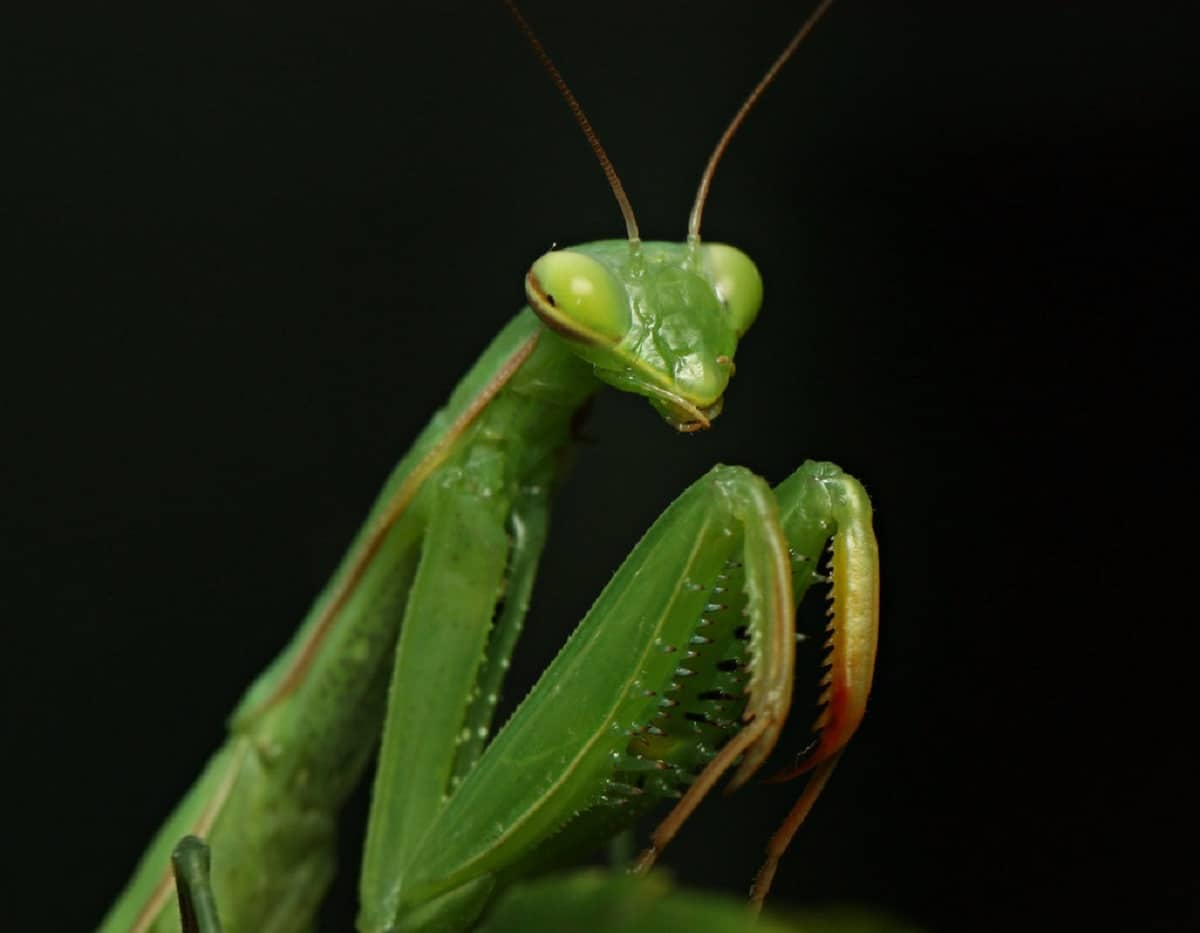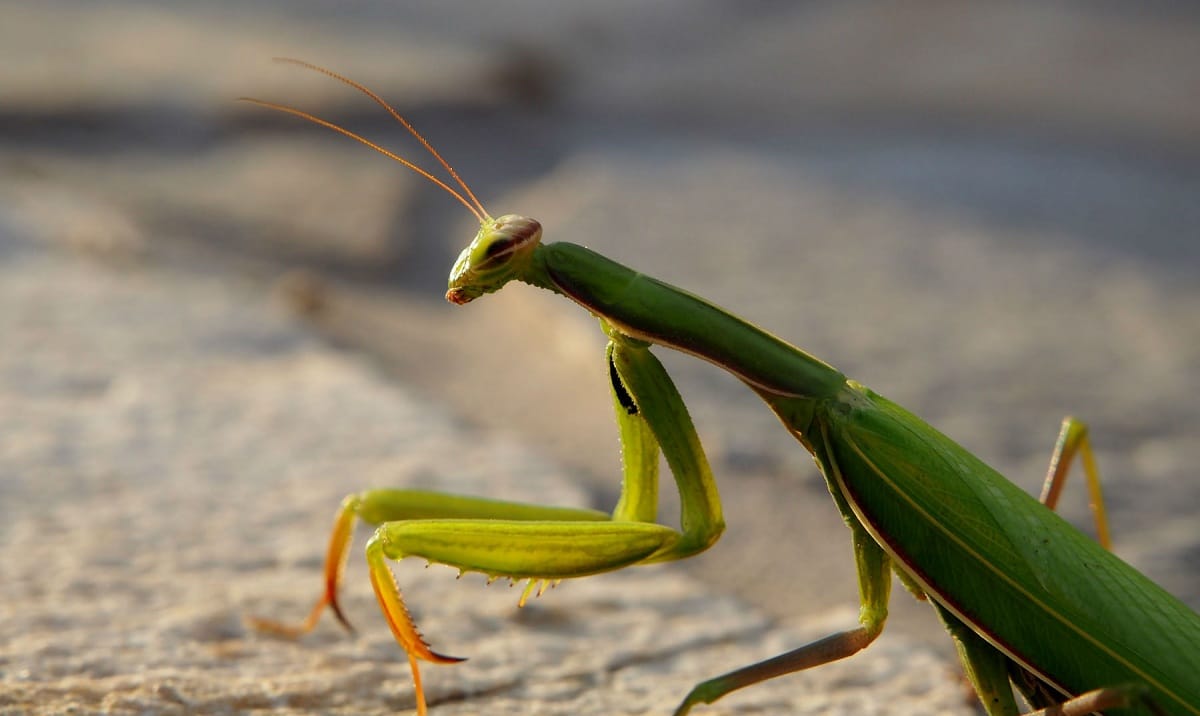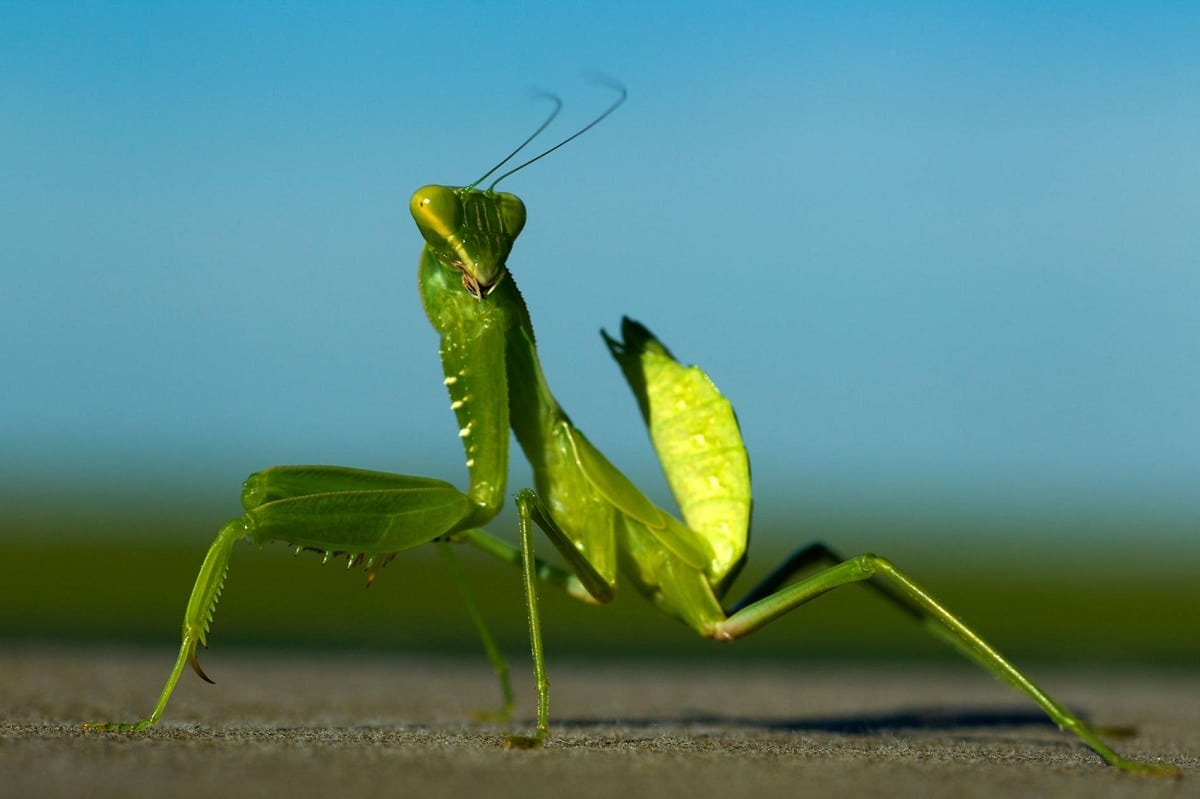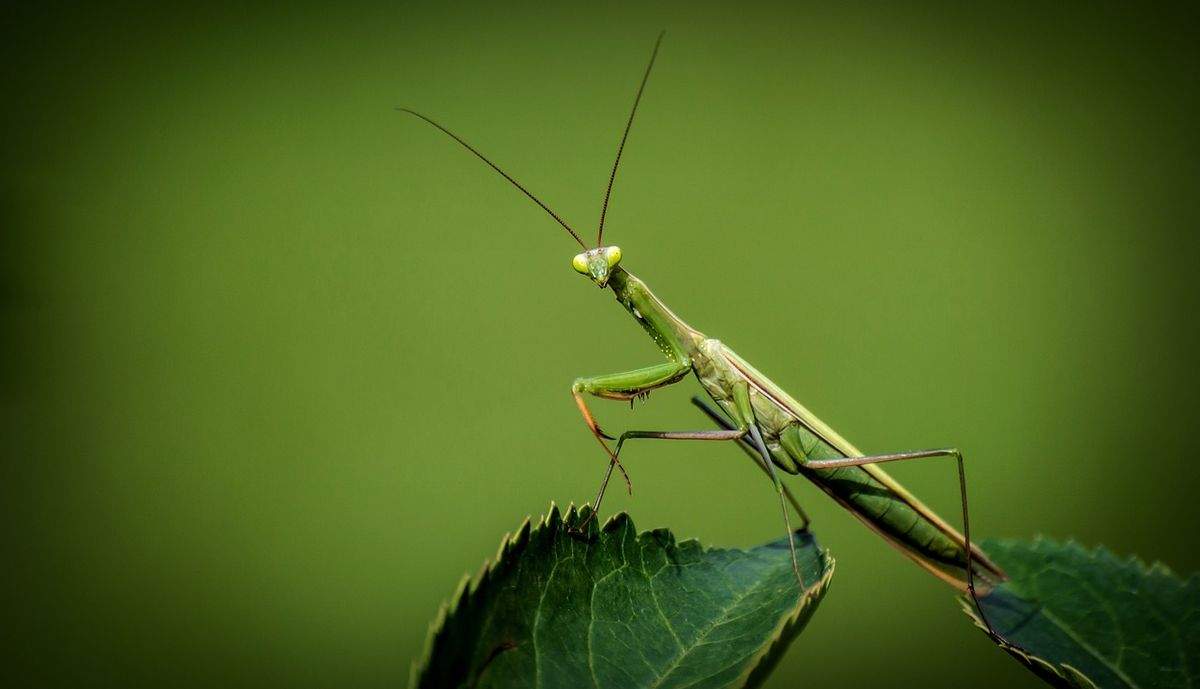
Today we are going to talk about an insect that is medium in size, which is well known throughout the world and which can help to control pests of other insects in crops. It's about the praying mantis. It is an insect known throughout the world for the strange position that its front legs have in such a way that it gives the feeling that they are praying. Although mostly found in the wild, it can also be seen as an exotic pet in some homes. It is an animal species that has great aesthetic qualities that serve to keep it as a pet and as an assistant for pest control in crops.
In this article we are going to tell you all the characteristics, habitat, curiosities and how the praying mantis can help us in our crops.
Key features

It is an insect that is approximately 10-12 centimeters long. Females are usually slightly larger than males, so it is easier to tell them apart. This insect has a somewhat elongated shape and they have two long antennae that protrude from its head that they use to know everything around them. It is quite interesting that its front legs have a position similar to the one used when we pray. Hence its name of praying mantis.
It has numerous spines that help to treat and retain prey in these claws. The color of the praying mantis depends on the environment where it is found and in which it has made the last change of skin. Normally this color usually varies between green to brown. This ability to be able to change the color depending on the ecosystem in which it is found is a very interesting camouflage capacity. It uses it to be able to hide from some predators and to surprise its prey.
If you shed your skin in an area with a lot of grass, it may turn green. On the other hand, if you change the molt in an area of straw or grassland, it will have a more yellowish and brown color. Since its camouflage is quite optimal, it is rare to find it in its natural habitat. One of the characteristics that the praying mantis has with the rest of the species that belong to the mantidae group is that it can move its head up to 180 degrees to know what is behind its back.
Life cycle and behavior of the praying mantis

The life expectancy of this insect is approximately one year. Throughout this year they are capable of shedding about 6 times. This is when they reach adult size. These insects hatch from the eggs that their mothers lay. Hundreds of eggs are laid in each clutch. When they are young they already look the same as an adult praying mantis, but smaller. It is not an insect that modifies its morphology throughout its development.
Contrary to popular belief, this animal is neither biting nor poisonous. One of the advantages that this insect offers in crops is that it helps control pests of certain insects. They are especially good in open spaces, so it is a beneficial insect in our gardens and orchards.
It is a carnivorous and very patient predator. In order to capture a prey, it is able to wait for it being almost immobile for a long time to surprise it. When it comes to attacking, it does so very quickly. They feed mainly on moths, flies, grasshoppers, crickets and other smaller insects. There are some testimonies that indicate that this praying mantis can capture small amphibians and reptiles, and even small birds.
Hummingbirds are very small birds and there are studies that claim that praying mantises hunt them. To hunt a prey it uses its powerful front legs. They are capable of firing at a speed imperceptible to the human eye and catching prey with their spines.
They are usually solitary insects that live independently. They only join with other individuals to mate. If several males coincide, they will fight to the death so that the one that survives can mate. One of the best known female behaviors is that some of them eat the male's head after mating. However, it is a much less common behavior than you think.
Habitat and area of distribution

The range of this insect begins in Europe and Asia. His name was introduced to him in North America. We can find these insects in almost all of Europe and in two thirds of the upper part of Asia.
Its main habitat is the fields and orchards. They are usually found naturally in grasslands or places that are not very humanized. It is not an easy insect to find since they have great camouflage capacity. They are camouflaged in grass, leaves and tree branches. Thus, they take the opportunity to wait for their prey, taking advantage of the camouflage and the favorable environment.
Praying mantis in cultivation
As we mentioned at the beginning of the article, this insect can help us control pests in our crops. Whether it is an orchard or any garden, this insect can protect us from some pests. The main advantage of the praying mantis with another insect that also helps as biological control is that do not wait until they are adults to begin to devour everything they find.
The smaller specimens bet on aphids and other insects that are smaller. The largest are those that trap insects of any size. They were advised to catch even frogs and some small birds. It can help us a lot to control some small insects that are the cause of the destruction of crops and the drop in production yield. If we have a garden, it will help the plants to thrive in good conditions.
I hope that with this information you can learn more about the praying mantis.